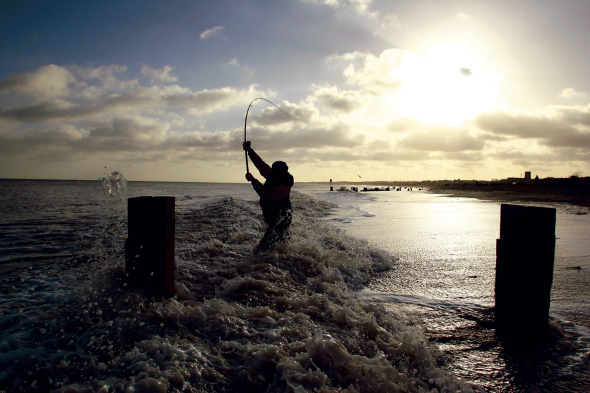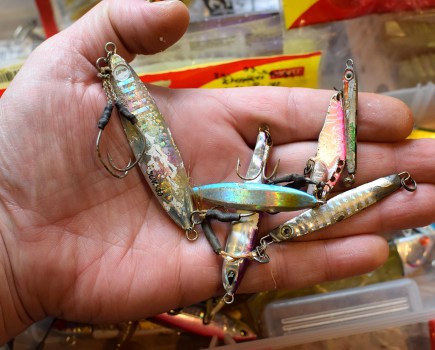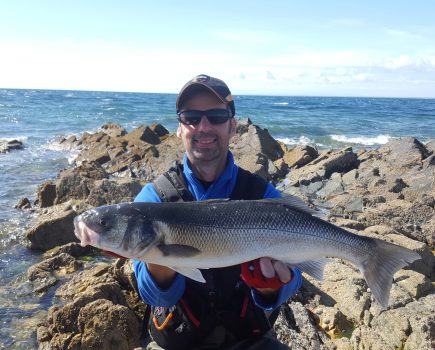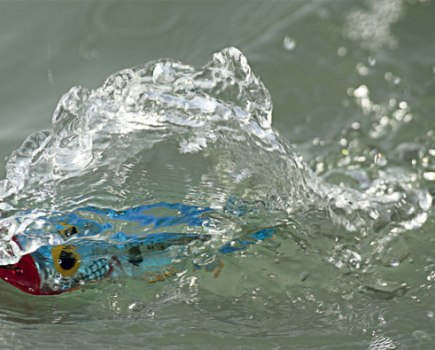Spring and summer are prime times to catch pollack from the shore, and here’s a brief insight into four great tactics to try to ensure you catch one of these stunning and very tasty fish…
Look at a pollack’s huge eyes and large protruding mouth and you can see it’s built to catch live fish in the darkness of the kelp forest among rock and reef.
Despite being a close relative of the cod, the pollack is a far more mobile predator that hunts at all water levels. Like codling, immature pollack frequent the inshore early in their life; they prefer harbours and pier walls and survive on a diet of worm, shellfish and small fish.
It is only when the food source inshore cannot sustain their increasing growth rate that they turn to the open deep sea for the larger prey, switching exclusively to fish.
Rarely caught by accident, pollack only occasionally take bottom-fished baits. Their pelagic lifestyle as an ambush predator and occasional scavenger sees them avoid the open sea bed and they always shoal around a feature. From the shore it can be a pier or breakwater wall or a cliff edge, but in deeper water those reef edges, pinnacles and the thousands of wrecks are their main haunts.
A shore pollack will rarely be bigger than 4lb; most are under 2lb with shoals often localised to a particular venue where they are not always caught because anglers don’t fish for them. From many remote rock marks, especially in Ireland, bigger fish are found close to shore, often taking up temporary residence to exploit any marine-rich kelp and cliff pinnacle edges.
Catching pollack involves a number of different angling techniques, which range from spinning to freelining. Tackle and baits vary between boat and shore, although the basics are similar.
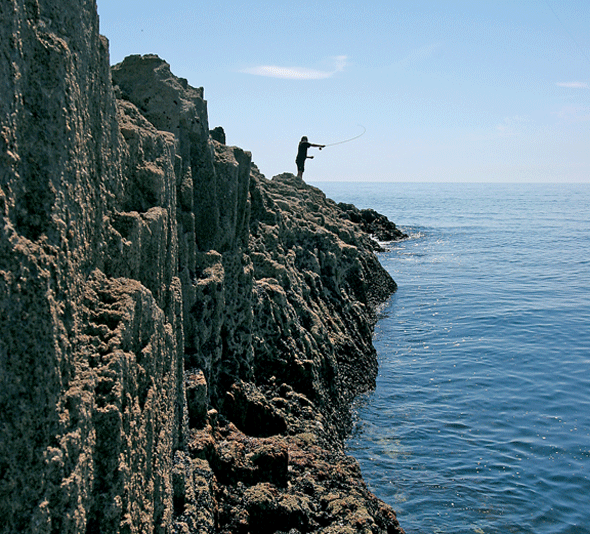
Chasing pollack can see you fishing some stunning rocky outcrops.
SPINNING
From many rock marks spinning is the most successful method to catch pollack. They will take most of the slimline, silver or copper lures that resemble a large or small sandeel.
Essential to the method is a steady retrieve of the lure because pollack will shy away from a lure that is retrieved jerkily, bass style. Artificial eels, Scallywags, jellyworms and Bandits are the most successful of the pollack lures, while a fresh or frozen sandeel is more deadly for large pollack.
Pollack, unlike bass, do not shy away from a lure presented close to a lead weight, due undoubtedly to their ambush, eat and retreat tactic. They do not inspect their prey closely like the bass.
This makes fishing a light lure, like an artificial eel, far easier because you can add a lead weight in the line in front of the lure to aid casting and this will not put off the fish.
Modern self-weighted shads are proving a big advantage for this method. Fish the lure or frozen sandeel on a trace of two to three feet or more. However, pollack will get wise to the same lure passing them regularly, so keep on the move when spinning, therefore covering different ground, and change the lure colour or type.
Spinning a fresh or frozen sandeel is a deadly way to catch pollack. Thread the sandeel head first on a size 2/0 Aberdeen hook and secure it with a half hitch in the snood line around the snout of the sandeel. Cast and retrieve the eel very slowly as close to the kelp and rock as you can. Takes are often at the last moment as you lift the eel up the side of rocks.
Similar tactics are employed from a boat, but generally only with lures which are dropped as close to wreck or reef as possible and then retrieved at a steady rate.
Pollack commonly haunt the upper areas of a wreck, its superstructure and mast wires and often close to the surface, so reel almost to the top as takes can come late.

FREELINING
One of the most effective and fun methods to catch pollack is using a freelined head-hooked wriggling king ragworm or a sandeel.
Using a spinning-type rig, add lead if needed although often the weight of a swivel is sufficient for this method. Use the tide and allow the bait to drift back at the speed of the current and sink as it does so.
This method lends itself to groundbaiting with sections of a ragworm or sandeel.
Alternatively, you can freeline or spin with a head-hooked live king ragworm and this can prove more effective than with a lure from many rock marks. The method is to retrieve the worm slowly and then allow it to sink before you retrieve again. Give the fish time to take the bait because striking too quickly means a fish will bite off the tail.
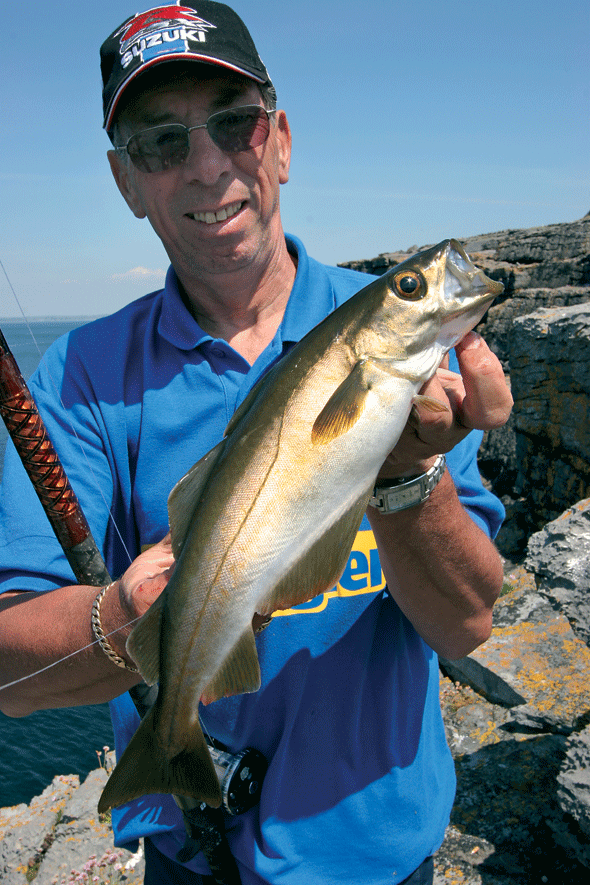
Alan Yates with a fine pollack he caught while freelining a sandeel.
FLOAT FISHING
What is known as the ballcock method is a way for fishing for big pollack from steep cliff marks over kelp tangles where the fish can dive into the kelp for safety.
A bottom rod is cast out with a leadhead weight incorporating a hook and then a large float is slid down the line.
From the float the bait can be fished up to 12ft or deeper; in many cases the depth you fish is crucial bearing in mind the ever changing tide and depth.
A pollack taking the bait is prevented from diving back to the kelp by the large float.
You can also fish this method with a smaller float or with a sliding float fixed directly to the mainline, but a pollack is powerful and can quickly retreat to the kelp.
A similar method is a slider without a float. Use an American snap link to connect a short trace, with or without lead, and a hook baited with a ragworm to your mainline.
Allow it to slide down the line. Be fussy with the weight of lead added because this will affect the rig’s rate of descent to the sea bed.
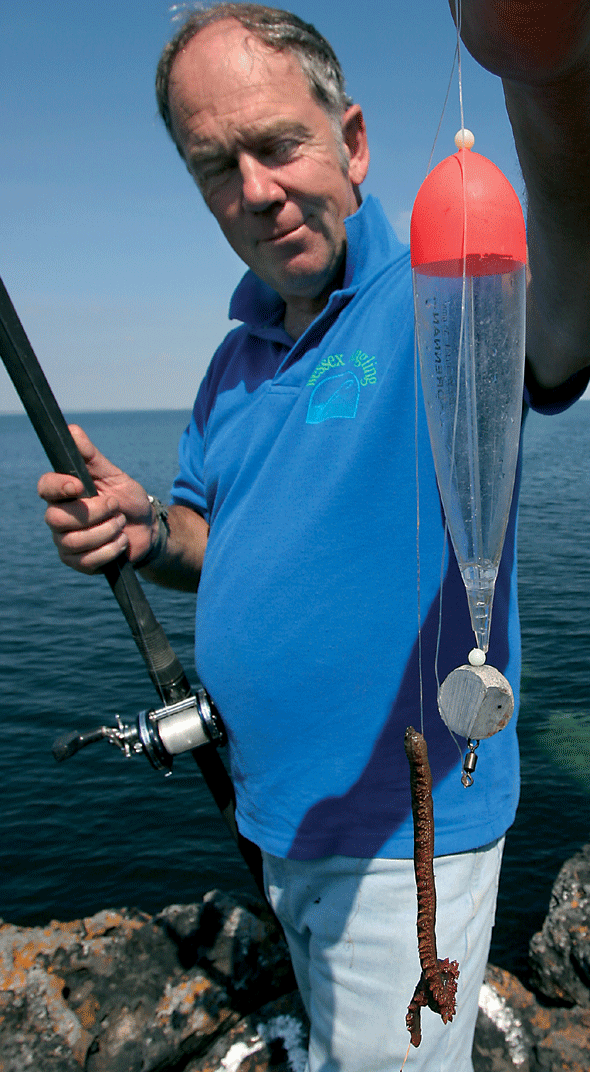
Wessex Angling’s Simon Barber with a typical float rig for catching pollack.
FRENCH BOOMS
Smaller pollack that frequent harbour arms and breakwaters can be fun to catch on a light rod with a long, light monofilament paternoster with hooks baited with head-hooked white rag, mud rag of small king rag and allowed to drift back in the tide among pier piles and stanchions.
On walled piers, French booms and a slightly heavier outfit can be used to fish ragworms just off the sea bed or alongside the wall in the tide. The depth the baits are fished is crucial, which is why the booms are spread wide apart with the overall trace length of 12ft essential to the method.
A special rod-rest to hold the rod tip out from the wall or piles is used by many anglers with baits carefully and deliberately raised and lowered to tempt fish to take the bait but to discover the feeding depth of the fish.
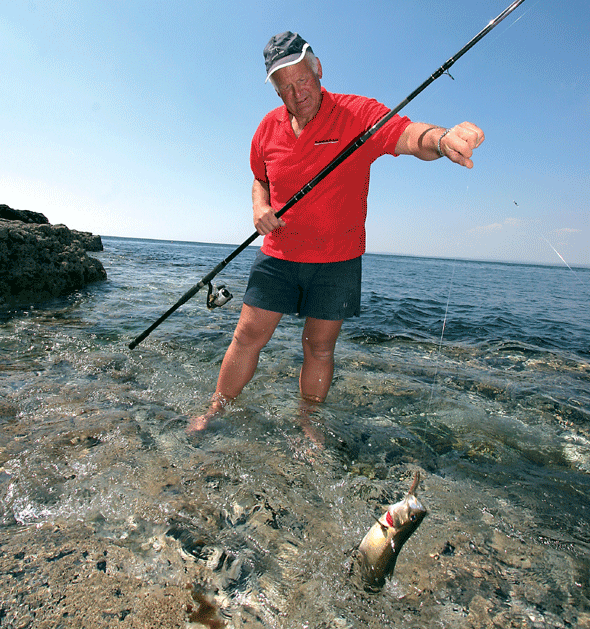
Chris Clark caught this rock-edge pollack on a ragworm.
TOP TIPS
● Pollack take advantage of tidal movement to feed, as well as waiting for food to pass them, so a mobile approach by the angler and moving the bait is essential.
● Allow pollack time to take the bait because they often nip at the tail of a ragworm or lure.
● Spinning and freelining rods chosen for rock fishing are often too light. Beware, especially in Ireland, because a 5lb pollack can make a mockery of a carp rod among the kelp. A light (bass) beachcaster is the best choice.
● Pollack shy away from the same lure if it is dragged past them too many times. Fan out your casts to probe every angle and depth and then move to the next cliff ledge.
● Pollack are a delicate species and because they wriggle violently when handled are prone to fatal damage if dropped. Fish to be returned should be handled with care in a wet cloth or landing net.
● From piers, pollack often frequent the level where weed grows off the wall. Finding the productive level is a secret to success.
● Fishing for pollack from piers at night is more successful near or on the surface.
● The pollack’s initial run to cover after taking the bait is powerful, so make sure you can operate your reel’s drag. After that their stamina is limited.
● The minimum size for Pollack is 30cm.

